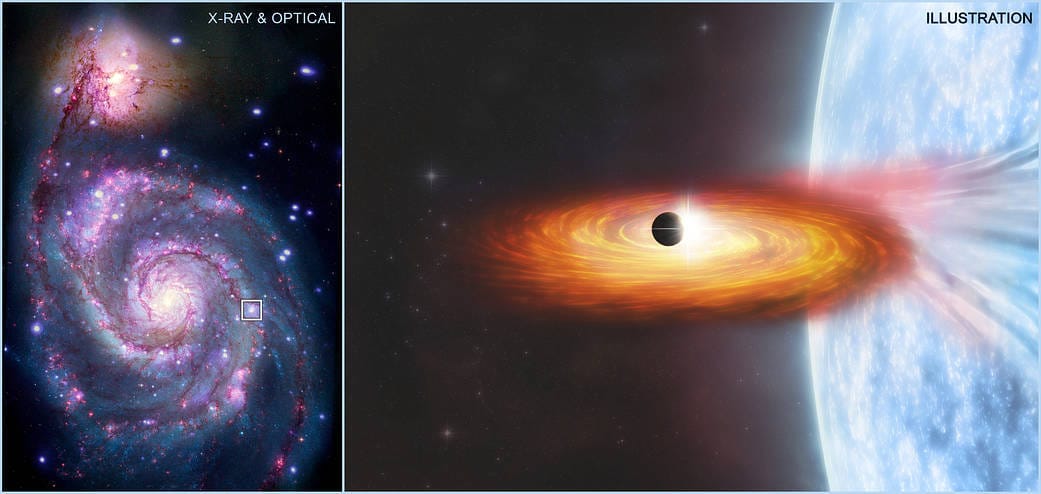
Signs of the first planet ever transiting a star may have been discovered for the first time beyond the Milky Way galaxy.
“Chandra scientists have found the first possible planet candidate outside of our galaxy! Located about 28 million light-years from Earth in galaxy M51, it’s thousands of times farther away than all the other exoplanets detected in our Milky Way,” the Chandra X-ray Observatory tweeted on Monday.
M51-ULS-1b, a possible exoplanet, is located 28 million light-years distant in Messier 51 (M51), widely known as the Whirlpool galaxy. Rosanne Di Stefano, an astronomer at the Harvard-Smithsonian Center for Astrophysics headed the study that shows the first planet discovered beyond our galaxy. In a statement, she said, “We are trying to open up a whole new arena for finding other worlds.”
This discovery is based on transits, which occur when a planet passes in front of a star and blocks some of the star’s light. Thereby, resulting in a distinctive drop in brightness that was observable while using telescopes, according to the Chandra X-ray Observatory. This method had likewise discovered thousands of exoplanets.
Three galaxies
Astronomers examined three galaxies beyond the Milky Way using NASA’s Chandra X-ray Observatory and the European Space Agency’s XMM-Newton space telescope. They studied 55 distinct systems in M-51; the Whirlpool galaxy, 64 systems in Messier 101 (M-101), also known as the “Pinwheel Galaxy”; and 119 systems in Messier 104, also known as the “Sombrero galaxy.”
The team led by Di Stefano utilized Chandra to check for dips in the brightness of X-rays to find the planet. They discovered the probable exoplanet in a binary system surrounding two big objects in the Whirlpool galaxy. Either a neutron star or a black hole orbiting a giant companion star.
The passage, which they watched, lasted roughly three hours in total, with X-ray emissions dropping to zero. This allowed them to determine that the object is roughly Saturn’s size. It orbits the neutron star (or black hole) at a distance twice that of Saturn’s distance from our sun.
The first exoplanet was also discovered in 1992. Most exoplanets detected since then have been fewer than 3,000 light-years from Earth.
